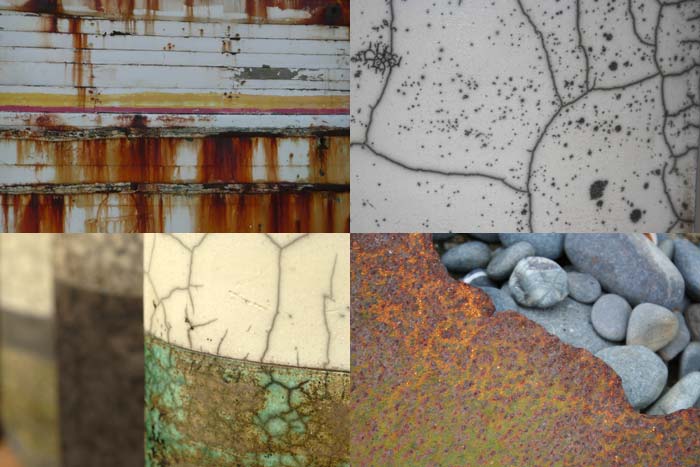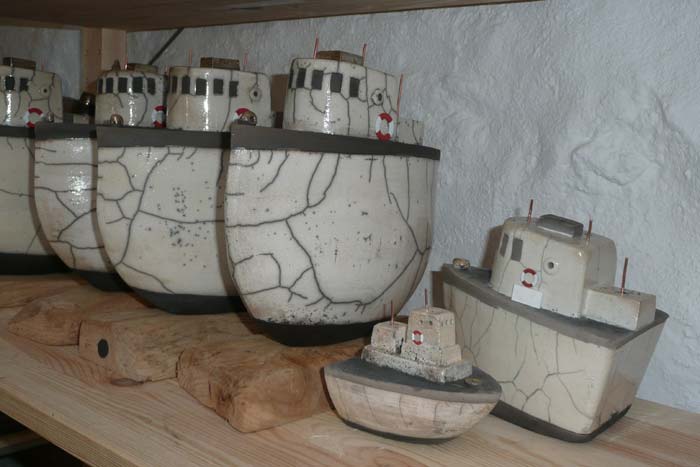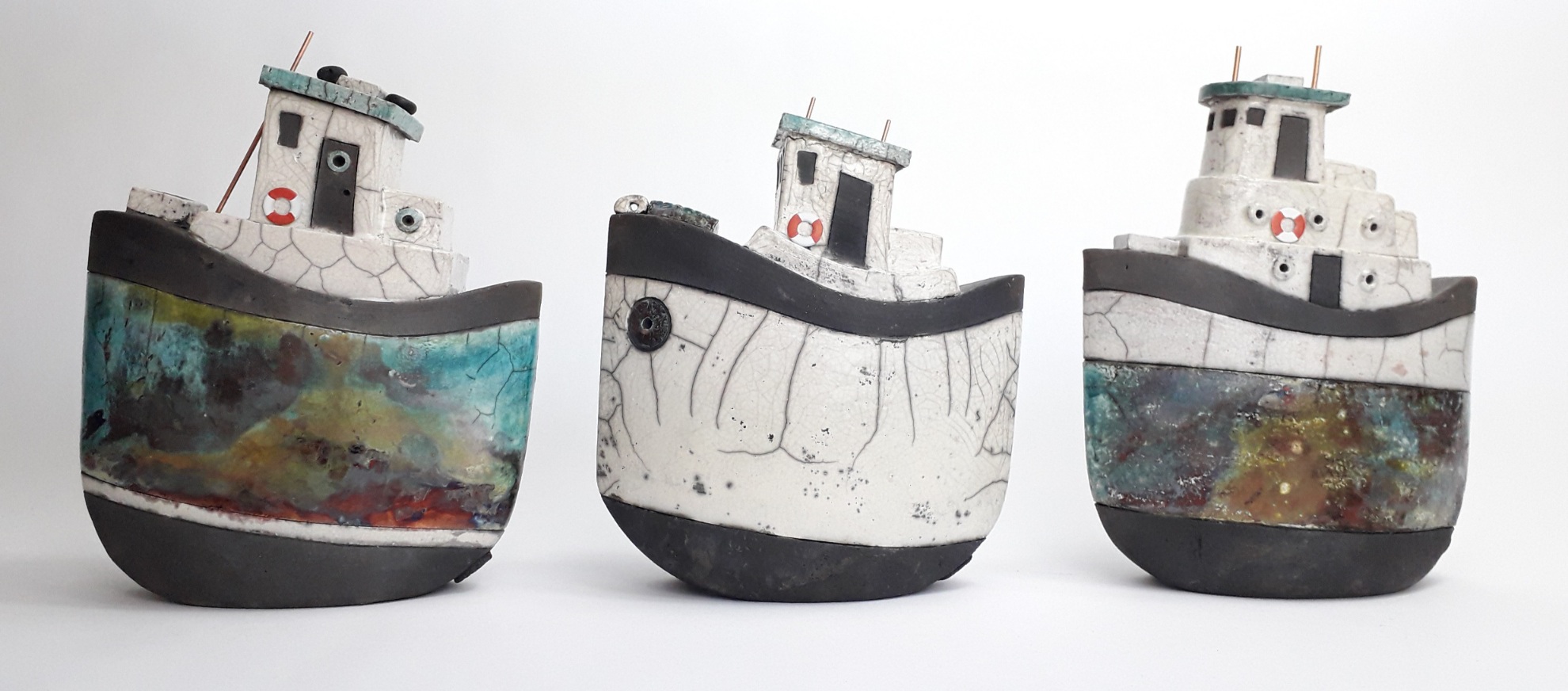About

Richard Goodwin-Jones is an established designer-maker, recognised for his unique range of hand-made ceramics. He's worked solely with Raku since leaving art college in 1984. In 2008 he moved to the Cote d’Armor region of northern Brittany, France, famous for its beautiful pink granite coastline. Here he set up his current studio with his wife Julie, and although recently retired she continues to support Richard and helps develop ideas for new pieces.

Richard's work is influenced by the colours and textures found within the harbours, boatyards and coastline of Brittany and Cornwall. In particular he loves to photograph old working boats that have plenty of character - such as rusty hulls or colourful and often distressed paintwork. He translates this research back in the studio to develop new designs. He then uses the distinctive Raku firing technique to attempt to reproduce similar effects on the surface of each piece of work.

Richard has developed a range of stylised ceramics, which are made as free standing or framed pieces. Everything is made using a combination of hand building, press moulding and slip casting techniques. Richard enjoys the flexibility of constructing a piece from several sections of clay rather than throwing a piece on a potter’s wheel.

‘Raku’ is an exciting process of firing clay objects that originated in Japan. Richard loves this method of firing because it allows him to be more hands-on with each piece during the firing process. He uses a homemade gas-fired kiln. This is a rather unique structure, built by Richard himself as a ‘temporary’ kiln. However as it works so well he’s still using it 25 years later!

Once inside the kiln the pieces are rapidly heated to just below 1000°C. They are carefully removed from the kiln when they are glowing ‘red-hot’. Using long metal tongs and thick leather gloves, Richard places each piece onto a bed of combustible materials [such as dried grass cuttings, leaves, wood shavings etc]. The pieces are engulfed by flames and covered by a large metal tin - to reduce the supply of oxygen. Heat and smoke react with glazes to create characteristic Raku effects.

Richard's ceramics are intended to draw attention towards the unpredictable nature of the colours and textures created by the Raku process. The final effects can be either subtle and understated or surprisingly rich and dramatic. In addition to the main collection of work featured on this website, Richard also creates one-off and larger items which can be made to commission.
